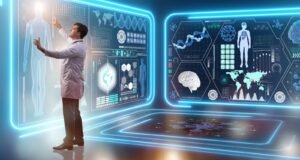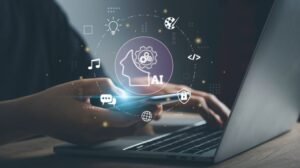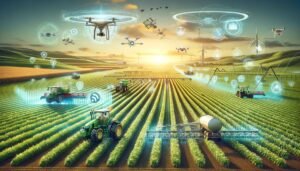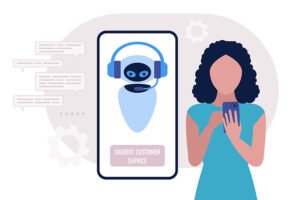AI in the Real World: Applications Beyond the Hype
Artificial Intelligence (AI) is no longer confined to the realm of science fiction; it has seamlessly integrated into our daily lives, transforming industries and revolutionizing the way we approach problem-solving. While discussions about AI often touch on futuristic visions, it’s crucial to explore the tangible applications that are making a significant impact in the real world.
Understanding the Hype
Before delving into real-world applications, let’s briefly address the hype surrounding AI. The excitement stems from its potential to mimic human intelligence and automate complex tasks. While the promise of AI-powered robots and sentient machines captures the imagination, the true value lies in its practical applications that enhance efficiency, decision-making, and problem-solving across various domains.
Healthcare

One of the most promising applications of AI in the real world is within the healthcare sector. AI algorithms analyze vast amounts of medical data to assist in diagnostics, identify potential treatment options, and even predict patient outcomes. Machine learning models, for instance, are helping radiologists detect abnormalities in medical images with higher accuracy, thereby expediting the diagnosis and treatment process.
Finance
 In the financial industry, AI is playing a pivotal role in fraud detection, risk management, and personalized financial advice. Predictive analytics and machine learning algorithms analyze transaction patterns, enabling banks to identify and prevent fraudulent activities in real time. Additionally, AI-powered robo-advisors provide tailored investment strategies based on individual financial goals and market trends.
In the financial industry, AI is playing a pivotal role in fraud detection, risk management, and personalized financial advice. Predictive analytics and machine learning algorithms analyze transaction patterns, enabling banks to identify and prevent fraudulent activities in real time. Additionally, AI-powered robo-advisors provide tailored investment strategies based on individual financial goals and market trends.
Education
 AI is reshaping the education landscape by providing personalized learning experiences. Adaptive learning platforms use AI algorithms to understand students’ strengths and weaknesses, tailoring educational content to meet their specific needs. This not only enhances the learning experience but also helps educators identify areas for improvement in their teaching methodologies.
AI is reshaping the education landscape by providing personalized learning experiences. Adaptive learning platforms use AI algorithms to understand students’ strengths and weaknesses, tailoring educational content to meet their specific needs. This not only enhances the learning experience but also helps educators identify areas for improvement in their teaching methodologies.
Agriculture
 In agriculture, AI is optimizing resource utilization and crop management. AI-powered drones equipped with sensors and cameras monitor crop health, detect diseases, and assess the need for irrigation. Machine learning models analyze historical data to provide insights into optimal planting times and crop yields, empowering farmers to make data-driven decisions for increased productivity.
In agriculture, AI is optimizing resource utilization and crop management. AI-powered drones equipped with sensors and cameras monitor crop health, detect diseases, and assess the need for irrigation. Machine learning models analyze historical data to provide insights into optimal planting times and crop yields, empowering farmers to make data-driven decisions for increased productivity.
Customer Service
 Chatbots and virtual assistants are becoming ubiquitous in customer service. AI-driven chatbots, equipped with natural language processing capabilities, offer instant responses to customer queries, streamline support processes, and provide a round-the-clock service experience. This not only improves customer satisfaction but also allows businesses to allocate human resources more strategically.
Chatbots and virtual assistants are becoming ubiquitous in customer service. AI-driven chatbots, equipped with natural language processing capabilities, offer instant responses to customer queries, streamline support processes, and provide a round-the-clock service experience. This not only improves customer satisfaction but also allows businesses to allocate human resources more strategically.
Conclusion
Chatbots and virtual assistants are becoming ubiquitous in customer service. AI-driven chatbots, equipped with natural language processing capabilities, offer instant responses to customer queries, streamline support processes, and provide a round-the-clock service experience. This not only improves customer satisfaction but also allows businesses to allocate human resources more strategically.
